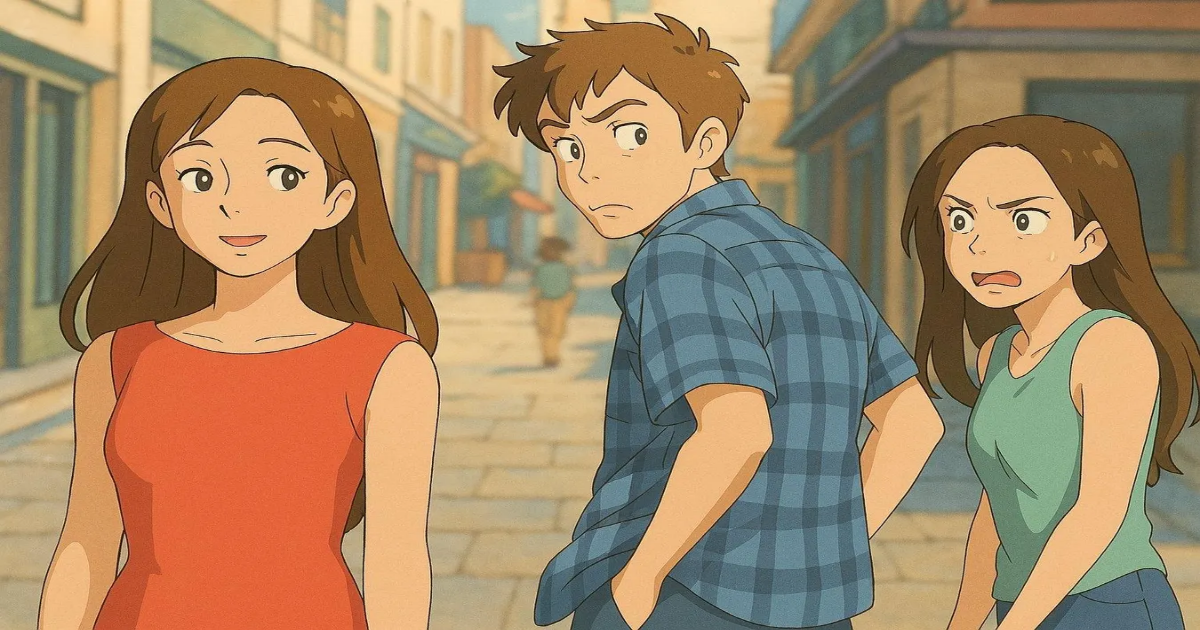The ‘distracted boyfriend’ meme turned Studio Ghibli by OpenAI.
X (Twitter)
The launch of OpenAI’s new image generator, powered by GPT-4o, has flooded the internet with Studio Ghibli-inspired images in a trend that, ironically, goes directly against the ethos of Studio Ghibli.
Animator Hayao Miyazaki, co-founder of Japanese animation house Studio Ghibli, famously delivered a passionate condemnation of AI that is often quoted by critics of the technology.
Now, Ghibli’s “house style,” or at least, an imitation of it, is available as a generative filter, and social media timelines have been flooded with cutesy, wide-eyed selfies and iconic photographs transformed into anime images.
What Is The Studio Ghibli AI Trend?
After OpenAI released a new image generator, users quickly realized that it could deliver high quality images with relatively unrestricted copyright filters.
Wonky fingers and weird background details are still present, but less so, making it harder to distinguish AI images from the real thing.
Users experimented with different cartoon styles, such as South Park, Rick and Morty and The Simpsons, but Studio Ghibli proved the most popular, trending on X (Twitter).
While Studio Ghibli films are often dark and turbulent, the animation studio is also famous for its quiet, contemplative scenes, featuring meticulously animated characters simply soaking in the hand-drawn scenery.
Hence, the studio’s brand tends to be associated with cozy, wholesome vibes.
The trend inspired plenty of memes, altered movie stills, edgy images turned cute and, of course, 9/11 jokes, but many simply wanted to Ghibli-fy their own personal photographs.
The Trend Goes Against The Ethos Of Studio Ghibli
Studio Ghibli fans were taken aback by the trend, as the use of AI image generators to copy an artist’s personal style goes directly against the ethos of Studio Ghibli and its co-founder Hayao Miyazaki.
Many commentators pointed out that the trend was in bad taste, and cheapened the carefully cultivated aesthetics of an animation studio known for its dedication to the craft.
Miyazaki, an Oscar winner, has directed many of Ghibli’s most iconic works—Spirited Away, My Neighbor Totoro, The Boy and the Heron—and he’s made his feelings about generative AI very clear.
Years before generative AI invaded the internet, Miyazaki was shown an AI-generated animation, which he condemned, saying, “I strongly feel that this is an insult to life itself.”
When the programmers tell Miyazaki that their intent is to create a machine that can draw like a human, Miyazaki falls silent.
Later, the director can be seen musing on the emerging technology as he works, saying, “I feel like we are nearing the end times. We humans are losing faith in ourselves.”
Many Studio Ghibli films depict the grandeur of nature and stress the importance of living in harmony with the natural world—the irony of using generative AI, a horrendously energy-intensive technology, to replicate the studio’s style was noted by many commentators.
The novelty for the Ghibli trend will likely wear off quickly—it is, after all, just another filter.
The Ghibli image flood, however, highlights how disposable art is becoming, thanks to generative AI.
Studio Ghibli’s style was already absorbed into pop culture, common enough to be pastiche, but generative AI ramps up mass production, a factory churning out imagery that at first glance, almost appears to be art.
MORE FROM FORBES
ForbesCoca Cola’s AI-Generated Ad Controversy, ExplainedBy Dani Di PlacidoForbesHow ‘JD Vance Edit’ Memes Broke The InternetBy Dani Di PlacidoForbesNicolas Cage Warns Against ‘Dead End’ Of Generative AIBy Dani Di PlacidoForbesThe Dream Logic Of ‘The Boy And The Heron,’ ExplainedBy Dani Di Placido
